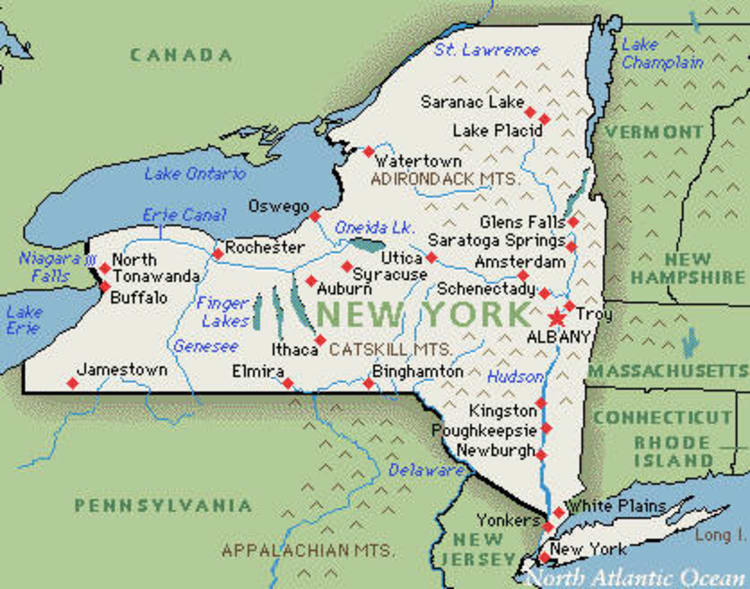 New York state's second city of Buffalo has long been a national symbol of rust-belt economic and infrastructural decay. Now urban planners have approved a massive cannabis facility backed by California capital for the city's long-inactive waterfront. Buffalo's boosters say the project could turn the Great Lakes region into a leading global hub of cannabis output.
New York state's second city of Buffalo has long been a national symbol of rust-belt economic and infrastructural decay. Now urban planners have approved a massive cannabis facility backed by California capital for the city's long-inactive waterfront. Buffalo's boosters say the project could turn the Great Lakes region into a leading global hub of cannabis output.
A century ago, Western New York's Buffalo was the seat of booming industry, but the city suffered a long slide downhill after World War II. The closing of the Bethlehem Steel plant in 1982, with some 20,000 jobs lost, left the city groping for a new economic future. Development in the financial and medical sectors has helped, but the quest for a post-industrial recovery is ongoing. Now Buffalo's boosters are banking on a new boom: legal cannabis.
The greening of the waterfront
The firm Flora Buffalo is now preparing to open its "high-tech campus" on the city's Lake Erie waterfront. Local website Buffalo Rising, a kind of semi-official organ of the urban recovery effort, says the sprawling new cannabis cultivation facility "will assuredly position this city as a driving force in the industry, not just statewide, but worldwide."
Flora Buffalo, a project of San Diego-based Flora California Prime Inc, has won approval to acquire 72 acres of waterfront, in a zone re-designated for such uses by the Buffalo Urban Development Corporation (BUDC). The BUDC, an agency created to buy up abandoned properties and sell them off to new economic interests, voted up the project unanimously in January. As the Buffalo News reported, the purchase price was $1.9 million. That comes to $42,500 per usable acre, as the property includes wetlands.
The $200 million project foresees hiring up to 1,000 employees for a facility eventually to cover 1.2 million square feet, including greenhouses, an extraction laboratory and corporate offices. The site mostly covers what the BUDC has dubbed the Buffalo Lakeside Commerce Park, but it will extend into the Union Ship Canal area, designated a "brownfield" by New York state's Department of Environmental Conservation.
Much of the money for the project is coming from Zephyr Investors, a San Diego real estate development company led by Buffalo native, Brad Termini, who also sits on the board of Flora.
Flora plans to conduct medical research in cooperation with Buffalo's Roswell Park Comprehensive Cancer Institute and SUNY Erie Community College.
An account on Buffalo Rising enthuses: "With the addition of the facility, the Great Lakes region, including southern Ontario, will become the largest producing region of cannabis in the world. Across the lake in Ontario there are 6 publicly traded companies with valuations in excess of $1 billion that didn’t exists three years ago. This is an important milestone that Buffalo will be able to participate in this rapidly growing industry, creating jobs and economic impact for the region, and eventually cross border trade when the state and federal conflict eases."
The political equation
As that statement makes clear, the project is predicated on political changes—it takes for granted that cannabis legalization is coming to New York state, and anticipates that the federal government will eventually follow. In fact, under terms of the deal, construction is not to begin, and the BUDC's sale of the property to Flora is not be finalized, unless a legalization bill passes in Albany by year's end.
Buffalo Mayor Byron Brown is enthusiastically on board with the project, and strikes confident tones about the political prospects. "The sale of this land positions the City of Buffalo to be on the leading edge of the potential passage of recreational marijuana in New York State," Brown told the Buffalo News. "We don’t think it's premature… We think it's wise."
Brown emphasized that Flora and Zephyr have agreed to a "community benefits" package, including a commitment that at least 25% of the contractors on the construction will be minority-owned. The same 25% of the construction workers are to from minority communities, and at least 5% will be women. Flora has also agreed to a target of 75% local workers, with preference for city residents, and all are to receive a "living wage." The project is also include an "incubator" space for Buffalo entrepreneurs and a vocational job-training center.
But at the end of March, the New York state budget was approved by lawmakers in Albany—without the legalization measure that Gov. Andrew Cuomo wanted to be included. "In concept, we have agreement," Cuomo said upon passage of the budget bill. "But that is all about the devil is in the details. And that is going to take more time to work out."
Some lawmakers—and many legalization advocates—felt that Cuomo's measure was too conservative, and were pushing a more far-reaching bill, the Marijuana Regulation and Taxation Act (MRTA).
Negotiations are expected to resume later this month, but sticking points include how the state would apportion the tax revenue from cannabis sales, whether the governor or lawmakers would have more control over the licensing process—and just how much cannabis would actually be legalized. Cuomo's version would legalize up to an ounce—the same quantity already decriminalized in New York since 1977. Under MRTA, the threshold is to be two pounds. MRTA would also address the olfactory dilemma in law enforcement, prohibiting police from considering the scent of cannabis as reason to conduct a search.
Image from GreenwhichMeanTime







Recent comments
2 days 10 hours ago
4 weeks 2 days ago
8 weeks 1 day ago
12 weeks 1 day ago
12 weeks 6 days ago
22 weeks 6 days ago
27 weeks 3 hours ago
28 weeks 14 hours ago
28 weeks 17 hours ago
49 weeks 1 day ago